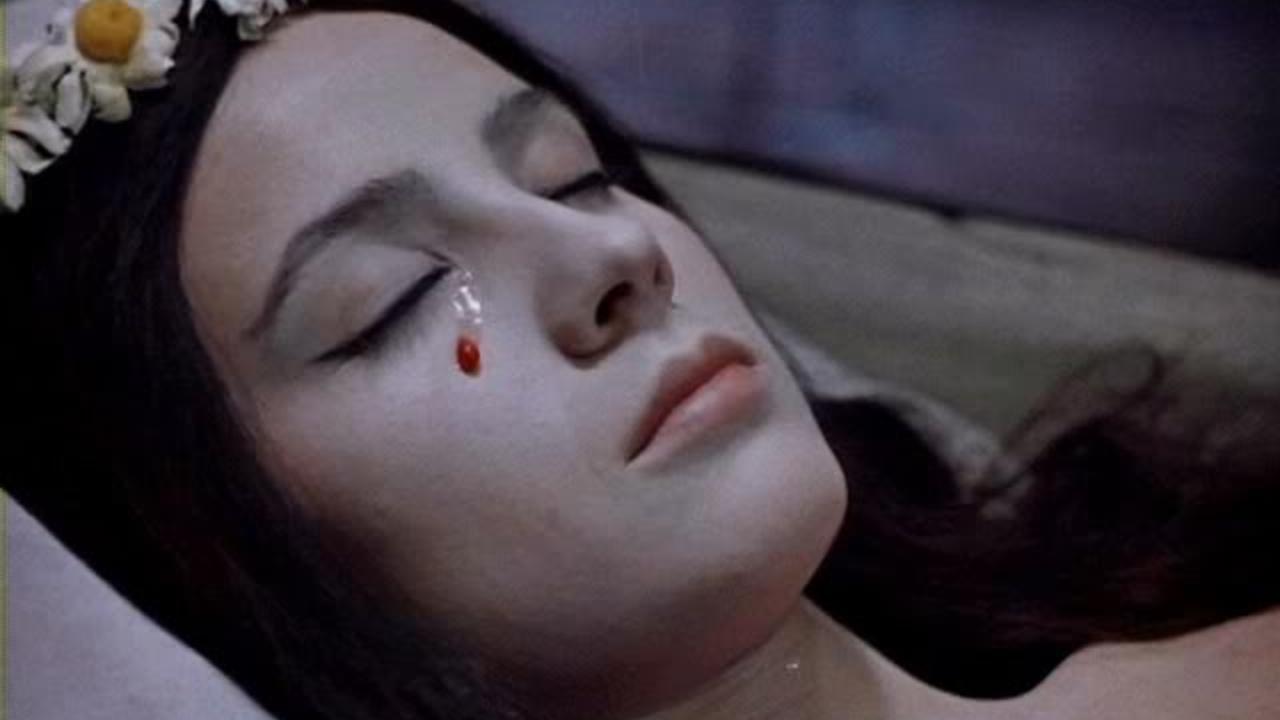Insofar as you can take its story at face value as it is presented, Viy is about a seminarian named Khoma who, along with two friends, finds himself lost one night while on leave from his studies. The three are given shelter by an old woman, who turns out to be a witch. Disgusted when she uses magic on him Khoma beats her, only refraining from a killing blow when she turns into a beautiful young woman. Later Khoma is summoned to a remote village to say prayers for a young woman who is dying. It is the witch, and as Khoma prays over her body across three nights she returns to torment him.
Viy has the feeling of being an old, old story; something handed down by word of mouth through generations, perhaps to scare children into staying in bed ('if you don't go to sleep the witch will get you'). In fact the story was published in Nikolai Gogol's 1835 collection Mirgorod, but there has apparently been nothing discovered to substantiate his author's note that claimed the tale as one from Ukrainian folklore. However, Gogol appears to have captured that tone so completely that his story became what he initially pretended it was. The film has clearly influenced many since it was made, but Gogol's story has also been reinterpreted; as Mario Bava's Black Sunday, as a ghost story in dialogue in Joe Dante's Piranha and in a recent Russian remake, in 3D..
This was the first horror film of the soviet era to be released in the USSR, and co-directors Konstantin Yershov and Georgi Kropachyov apparently found their way around censorship rules by invoking the tale's folkloric history. That said, the film is mild by today's standards. There is little violence and no blood at all, however, despite their frequently crude realisation (even by 1967 standards), there are images here that remain creepy after more than 45 years. Beautiful as Natalya Varley is, there is something haunting about her here, her face covered in white make up (it's possible that this was also an influence on Helena Anýžová's look in Valerie and Her Week of Wonders) and the crude special effects prove oddly effective because when Varley is superimposed into the shots to make her appear to fly there is a sense of dislocation and other-worldliness imposed by the fact that the join between the shots is obvious. Varley's creepiest moment comes on the first night, as the witch wakes and advances on Khoma, who rushes to draw a protective sacred circle before she can reach him
The film has a growing surreal feel to it throughout, but it is the final scene, in which Khoma, cowering in his protective circle of chalk, is beset by demons who climb, seemingly endlessly, out of the walls and floors that proves most memorable and most chilling. Again, the effects and costumes are unmistakably a little cheap and of their time, but the creakiness of them is more effective than any CGI because they have real physical presence. The designs are striking, and this is another point at which the film seems to have had an influence on later work. I'd be shocked if Guillermo Del Toro doesn't know Viy's last ten minutes by heart. Without any explicit violence or blood, there is a real sense here of something coming up from the bowels of hell, and it's all the more effective because the film has patiently built to this moment throughout, especially during its second half.
Viy doesn't, at least not obviously, reflect much about its time. It's not stylistically in keeping with the much parodied image of the summer of love and it couldn't be further from the aesthetic of the nascent New Hollywood. It's possible that there are political allusions if you know more about the USSR of the time, but it's also possible that all the film was intended as was what I enjoy and admire it as; a creepy and surreal piece of horror cinema that has been influential enough to feel familiar but remains entirely its own beast. You'll have to invest some time and effort to seek this one out, but it's worth the chase.
★★★★
You can find the rest of the articles in the Films of 1967 Blogathon at The Rosebud Cinema


I would never – in a million years – have heard of this film if you hadn't reviewed it for the blogathon. It sounds really intriguing, though, and the fact that it's from the old Soviet Union makes it seem even more fascinating. Thanks for introducing us to this film!
ReplyDelete